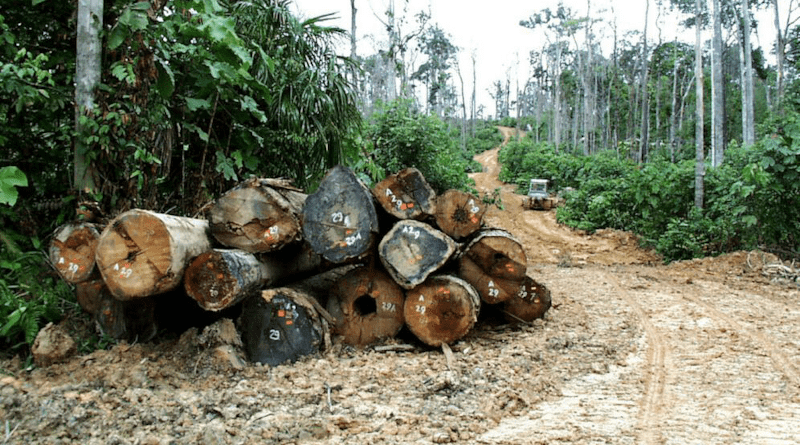‘Restore Tropical Forests’ To Address Climate Change
Restoring biodiverse tropical forests could quickly remove carbon dioxide from the atmosphere and address climate change, scientists show in a study that simulates how forests will respond to future climate scenarios on earth.
According to the study, limiting global warming caused by human activity to less than two degrees Celsius requires rapid reduction in greenhouse gas emissions as well as reduction of carbon in the atmosphere.
Peter Talaas, secretary general of the World Meteorological Organization, says that sea level rise and the melting of glaciers may continue until 2060 because of carbon dioxide in the atmosphere. “Of course, if we had carbon removal techs we could change the big picture, but so far that’s not the case,” Talaas said at a meeting ahead of the 28 February release of a section of the sixth report of the UN Intergovernmental Panel on Climate Change.
The study by the University of Hong Kong’s Department of Earth Sciences, published 17 February in Nature Climate Change, demonstrates areas that have the most cost-effective long-term (2030—2100) carbon storage potential for all climate change scenarios without additional carbon dioxide.
“In many tropical countries, restoring pasture land and degraded landscapes has multiple benefits. These new forests will continue to accumulate carbon under the most severe future climate change scenarios until the end of the century,” says Jed Kaplan, co-lead author of the study and associate professor in the Department of Earth Sciences and the Institute for Climate and Carbon Neutrality at the University of Hong Kong.
“In the Asia Pacific region, places like Sumatra, parts of Borneo and Indonesia, and Papua New Guinea are really outstanding places for restoration not only because there the climate will stay suitable for the next 70 to 80 years, but also because the land doesn’t have much value for other purposes, such as agriculture,” Kaplan tells SciDev.Net.
“Similarly, western and central Africa, parts of South-East Asia, north-western South America are promising for forest restoration. Southern Brazil, where quite a few large-scale restoration projects are underway, is very good too because it has a stable climate that’s not expected to change that much in the future; and it has high biodiversity and the land is relatively inexpensive.”
In contrast, according to the study, south-western Brazil, India and south China face the greatest climate change and cost barriers to restoration.
“In these places, the land might have more valuable uses like growing crops. For example, northern India is the breadbasket. Secondly, changes in the climate could make these areas drier or they may have a longer dry season in the future, which would make restored forests more vulnerable to future climate change,” says Kaplan.
The study notes that there are many factors that would need to be considered when undertaking restoration projects, including engaging with local communities and learning from indigenous knowledge of ecosystems, preserving biodiversity, and providing resilience to withstand fires, drought or disease.
“It seems that climate change is not the greatest threat to tropical forest restoration, but project planning, such as the inclusion of all stakeholders, may be much more important to the success of restoration programmes,” says co-lead author of the study Alexander Koch, previously a postdoctoral fellow at the University of Hong Kong’s Department of Earth Sciences and now a postdoctoral fellow at Simon Fraser University, Canada.
The study does not take into account all the potential different species that could be planted and this is an area for future investigation, says Kaplan.
“In our model, we limit the roots of trees down to about three metres, whereas trees in the tropics can have over 10-metre-deep roots,” says Kaplan. “So, trees in our model are more sensitive to things like drought than they would actually be in reality because they don’t have deep roots. On the other hand, trees like eucalyptus that grow really deep roots can suck out more water from the soil and cause streams to dry up.”
Rodney Keenan, chair of Forest and Ecosystem Sciences at the University of Melbourne, tells SciDev.Net: “This is an interesting study that modelled the potential for future climate change to impact on carbon sequestered in restored tropical forests. It included most factors that will potentially impact on tree growth, although human-induced fire was excluded and uncertainty about potential drought and heat impacts on tropical tree species is high.”
Keenan says the study “emphasises the need for these forests to be well managed and protected to meet carbon sequestration objectives. This will require strong local capacity and social and political support”.
*Neena Bhandari, Freelance foreign correspondent, journalist and writer.
This piece was produced by SciDev.Net’s Asia & Pacific desk.

